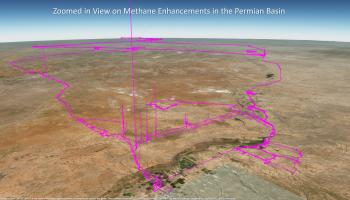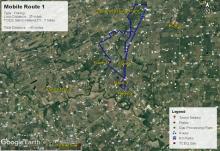Predictive, Source-oriented Modeling and Measurements to Evaluate Community Exposures to Air Pollutants and Noise from Unconventional Oil and Gas Development
The study is complete and now undergoing peer review and an independent quality assurance/quality control audit before HEI Energy releases the research report in 2025.
The goal of this study is to develop a broadly applicable model, the "TRAcking Community Exposures and Releases" (TRACER) model. The model will assess potential community exposures to chemicals in the air from UOGD and inform future health studies. The model will then be used to predict the magnitude and frequency of emissions from individual UOGD sources, and when coupled with dispersion modeling, will generate concentrations of chemicals in the air. The investigators will apply the following methods to achieve their goals:
- Collect stationary and mobile air quality and noise measurements in the Eagle Ford, Texas region.
- In collaboration with the Collett team, develop the TRACER model in the Eagle Ford region to generate chemical emissions data from specific UOGD processes. The teams will combine the predicted emissions with air quality models to estimate local and regional concentrations of chemicals in the air.
- Expansion of the TRACER model to the Marcellus region, leveraging data from the separately funded Appalachian Methane Initiative.
- Evaluate model performance by comparing air quality monitoring data with model predictions in the Eagle Ford region.
- Use TRACER model results to assess spatial and temporal variability of potential community exposures to UOGD-associated chemicals and evaluate the effects of different UOGD sources on potential community exposures.














